Carrie McGavock; Franklin's Scartlett

Relentless Mourning
I’ll never forget the first time I saw the portrait above of Carrie McGavock. Standing amongst others touring her home, I found myself surrounded by antiques, books, china and silver that once belonged to the McGavock family. It was our first time touring Carnton, and our docent that day described the headstrong and opinionated spirit of the young woman in the portrait, Caroline “Carrie” Elizabeth Winder McGavock. Carrie would leave a legacy like none other during her time serving as the Mistress of Carnton. Our tour began with our guide telling a story about artist Washington Bogart Cooper, and how upon his being commissioned to paint Carrie’s portrait, had become frustrated with the young woman. Not knowing what else to do, he’d penned a complaint to her Mother, Martha Grundy Winder.
The complaint described how Carrie refused to wear anything except a black dress upon sitting for her portrait, and Cooper was requesting assistance in convincing Carrie to choose a dress with more color. Mrs. Winder simply stated that she sent a dozen dresses with Carrie to wear for her sitting, ending the letter to Cooper with the two words, “Good luck.”
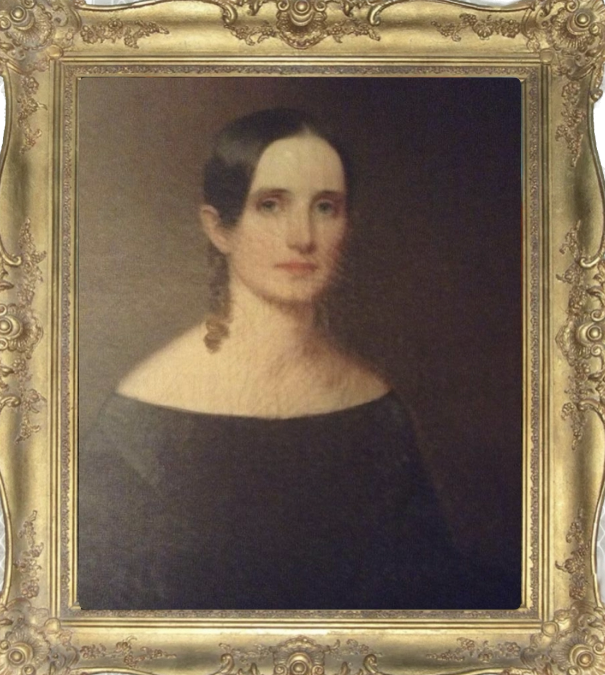
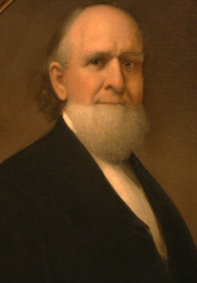
It’s easy to see who won that battle, as Carrie is indeed wearing black in the above painting, which was painted just prior to her wedding to John McGavock in December of 1848. At only eighteen years old, Carrie obviously thought nothing at all of standing up to Cooper, the famous portrait artist, as well as her Mother. Looking up at her portrait I was happy that Carrie McGavock used her voice, and that quietly her decision to wear all black for her wedding portrait was, more than one hundred and fifty years later, still speaking volumes as to her indomitable spirit. It seems as if Martha Grundy Winder knew when a battle was worth fighting, and the color of her daughter’s dress was of little importance to her.

The reasoning behind Martha’s lack of concern is unknown, but the answer most likely stems from her own upbringing and events in her own life. Why was Carrie McGavock so determined to wear black? Why didn’t her Mother Martha make any attempt to even speak to Carrie over Cooper’s concerns? From what I know of the 1840’s, most women were not given much of a choice in matters. But, I happened upon Carrie’s Mother, Martha Grundy Winder’s portrait, and quickly realized that she was also wearing black for the only portrait done of her during her lifetime. Did Martha Winder let Carrie’s indiscretion go because she shared in her desire to appear in all black?
Upon examination of a few other works by Cooper, it’s clear the reasoning behind why he preferred his young female subjects to wear lighter colors. Here are two portraits Cooper painted from the same period, also of middle Tennessee young women.

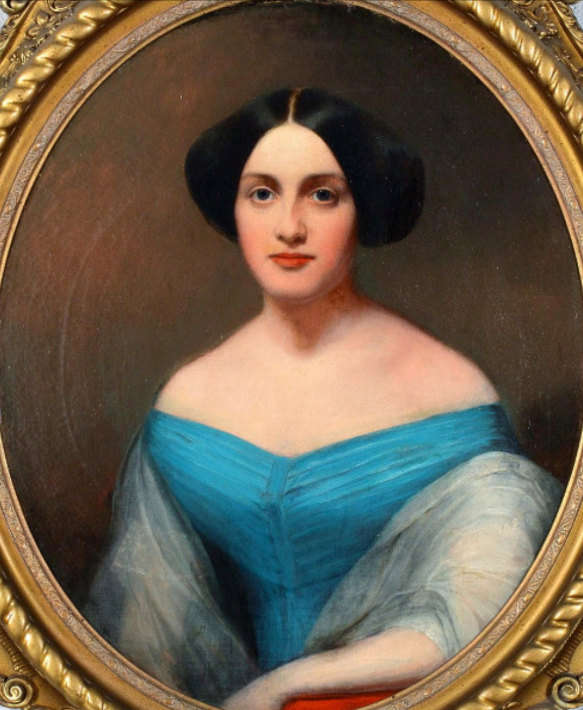
The subjects of the two paintings above look happier and more vibrant because of the brighter colors in their outfits. Were Martha Grundy Winder and her daughter Carrie just difficult, or were they making a statement about their lives?
Martha Winder Grundy
Carrie’s Mother, Martha Grundy Winder, had an idyllic childhood, with two loving and devoted parents. She grew up on property that today would be right in the middle of the busiest part of Nashville. Martha’s home was called Grundy Place, and when her family lived there, starting around 1812, it was much more rural than it is today. Martha Winder’s childhood home was right at the bottom of what would eventually be the state capital building in Nashville, Tennessee. When Martha’s family occupied Grundy Place, the hill the capital sat on was just that, a hill. Martha lived in Nashville in its very beginning, experiencing tremendous growth, the transformation of the town into the “Athens of the South” because of the number of colleges in the region, Martha might possibly even have played within what remained of the old Fort Nashborough.

Martha Grundy Winder was born in Nashville in 1812, the daughter of the distinguished Judge Felix Grundy. The Grundy family were loved amongst their neighbors and considered to be a well-respected family. Martha’s Father, Judge Grundy, mentored future President James K. Polk, with the two eventually opening up their own law firm in Nashville. Grundy served as Attorney General under Martin Van Buren, and political advisor to Andrew Jackson. Judge Grundy’s accomplishments are truly too numerous to list here, but amongst them would be the time he spent serving as a Congressman, as well as a United States Senator. Judge Grundy constructed a grand home called Grundy Place around the time of Martha’s birth, and she spent her entire childhood living on the property. The eighth of ten children, nine of which lived to adulthood, Martha grew up in a bustling, happy home at Grundy Place. While her Father was immersed in political matters, Martha’s Mother Ann “Nancy” Grundy was equally as devoted to her community and helping those in need.
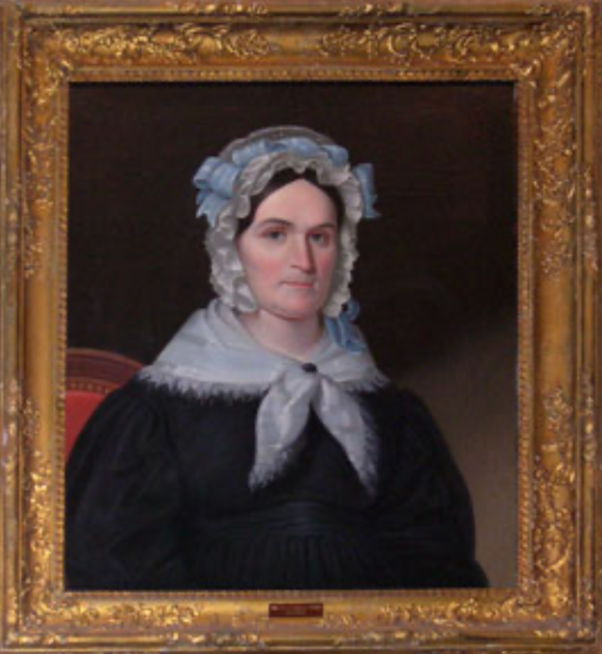
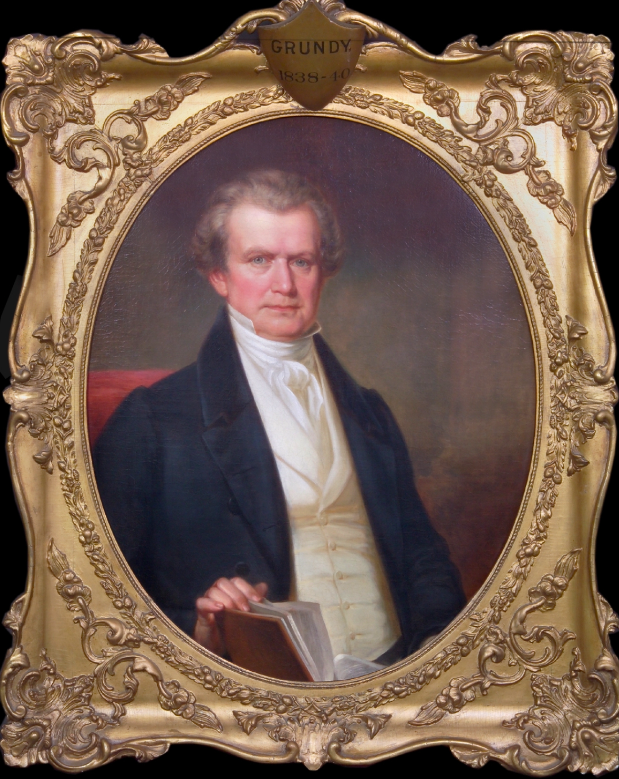
Dedicated to the First Presbyterian Church of Nashville, Nancy Grundy started several groups that helped children in need, even teaching them to read. After her death in 1847, Nancy Grundy was recalled fondly in the Nashville Banner newspaper as “a lady universally respected and loved.”
Like most teenagers, Martha Grundy probably took the life she experienced at Grundy Place somewhat for granted, despite the picture perfect environment. She wouldn’t stay long within her parents home.
Around 1827, Martha met Van Perkins Winder, who was just starting college at nearby University of Nashville. Winder was a wealthy young man, an orphan from Natchez, Mississippi. He’d inherited four sugar plantations after his parents deaths, along with many acres of land and more homes than he could ever use. However, upon their meeting, Martha and Van were just children, he being 18 and Martha 15. Despite their youth, the couple fell in love.

In 1828, nineteen year old Van Perkins Winder approached Judge Grundy and asked for his permission to marry young Martha. Judge Grundy adamantly protested because of his daughter’s young age, as Martha was only 16. Grundy also expressed to Winder that he finish his education before marrying his daughter. Despite Judge Grundy’s refusal, young Van Perkins Winder and Martha eloped only days later, marrying in Winchester County, Tennessee while Judge Grundy was away doing business in Washington, D.C. Nina Winder, Grundys granddaughter, recalled Van Winder’s reaction to Grundy’s upset over the couple marrying so young:
“Grandpa Van Winder was a very genial, social, friendly person and had lots of friends and namesakes. Aunt Sallie said her mother (Martha Grundy Winder) told her he threw a lot of style and spent a lot of money when he went with his family to Tennessee because he said he wanted to show the Grundys that Martha had not done so badly in marrying a young college boy.”
After their wedding, Martha and Van Perkins Winder moved south, where they eventually operated four sugar plantations in both Natchez, Mississippi and Louisiana. Van and Martha Winder started their family right away, with their oldest child, Caroline “Carrie” Elizabeth Winder, born in 1829, a little over a year after saying their vows.
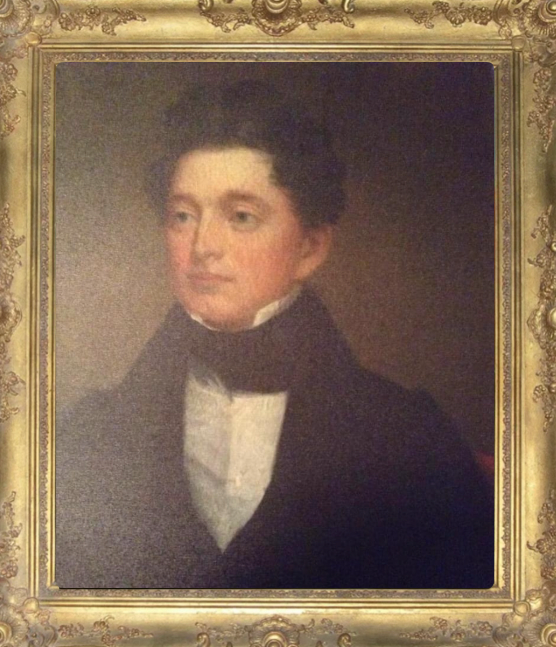
Mourning Time
Martha had grown up in the happy and chaotic Grundy home, which was full of healthy children and lots of activity. Having five siblings older than her and two younger, it isn’t unreasonable to assume she desired to replicate the wonderful family and idyllic life she experienced as a child. Martha and Van Winder would have fifteen children during their marriage. Sadly, only eight of those children would survive to adulthood. Upon examination of the Winder family and a timeline of events, one fact is glaringly obvious. The Winder family suffered many deaths, and lived in a constant state of mourning. Most likely, dealing with so much death was somewhat new to Martha, as her Grundy family only experienced the loss of one of her ten siblings, with her remaining sisters and brothers surviving to adulthood. Living within a constant state of loss, grief and mourning, having many infants and children who lived very short lives, had to have been so difficult for the Winder family. Not only was the home under a constant state of mourning, but Martha was almost always pregnant. At the time of Carrie Winder McGavocks 1848 marriage, Martha was pregnant with her twelfth child. Out of those twelve children, only seven remained alive. The impact each loss had on the family is unimaginable, and Carrie’s life was undoubtedly changed forever as a result of these ongoing losses. At thirteen years old, Carrie would suffer the loss of two sisters, ages eight and ten. Margaret and Elizabeth Winder would die only a year apart, leaving the family broken. Only three years later, the family would deal with death once again, suffering the loss of another Winder child, John, aged three. In addition to these three deaths, the Winders had several infants that passed before the age of one. After the loss of these siblings, Carrie Winder and her next oldest sibling shared an eight year age gap, causing her to be much older than all of her siblings.
Could both women wearing black in their portraits have been a reflection of the curse they probably felt their life was under? It’s possible both women had grown so accustomed to death, dying and the rituals associated with mourning, that they were only comfortable wearing black. Death had become such an intrinsic part of who they were, neither woman felt any obligation to make pretense of anything less than a permanent state of mourning.
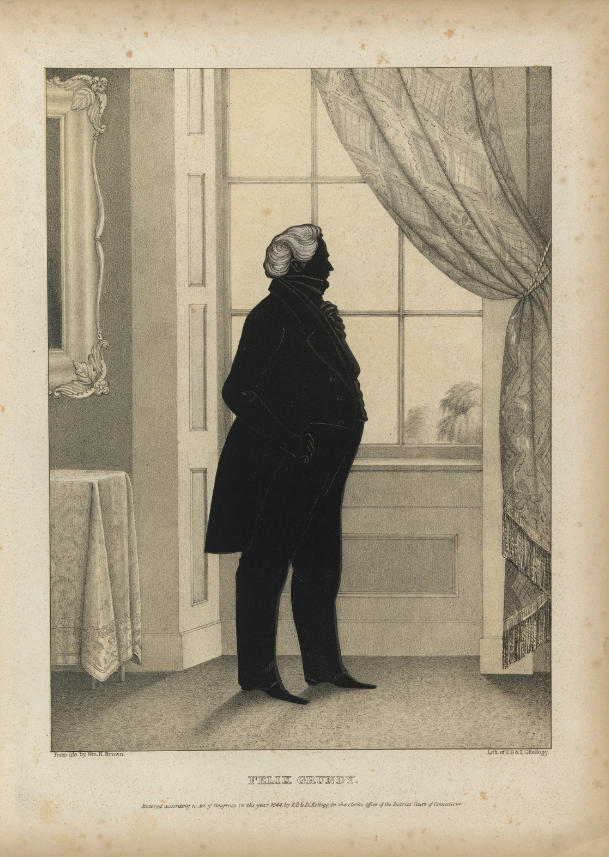
Although the Winders were plagued by the loss of so many of their children, they brought up their family in grand homes, living a wealthy and indulgent existence. The Winders were of the elite Natchez Sugar planters who benefitted so greatly off the rich black soil on the banks of the Mississippi River, which also provided transport for their empire. The dark institution of slavery and forced labor of many individuals, without a doubt, was the only reason the Winders were able to accumulate and hold on to such great wealth. No matter how much wealth the Winders were able to accumulate, dealing with the constant assault that death causes was undoubtedly devastating.
Right up into her teenage years, Carrie Winder McGavock lived with her family in the Natchez area of Mississippi. But in 1845, when Carrie was fifteen years old, the Winders purchased Ducros, a 1200 acre property with a home located on it in Schriever, Terrebonne Parish, Louisiana. Early on in their marriage, Van Winder promised Martha that he would build her a grand home, similar to the Hermitage, home of President Andrew Jackson. Improvements were made to the home already located at Ducros to achieve that goal, with Carrie Winder celebrating her marriage to John McGavock at Ducros in 1848. Its unclear as to whether or not Carrie had hopes that her new start as the mistress of her own home would relieve her of the constant sadness brought on by the death and dying the Winders seemed to be forever inundated. It wouldn’t be long before Carrie found out whether the forever present oppressiveness she experienced growing up, would follow her into her new life.
Martha Winder would give birth to her eleventh child four days after her daughter Carrie’s wedding. In the five years following Carrie’s wedding, Martha Winder would give birth to four more children, but also suffer the death of three.

1848
John McGavock planted this Osage Orange tree at Carnton in Franklin, Tennessee in 1848 on the occasion of the wedding of he and his bride, Carrie Winder. This same tree would be witness to the Battle of Franklin and the McGavock home as it was transformed into a field hospital.

Carrie and John McGavock would move into Carnton Plantation in Tennessee following their 1848 wedding. The couple would have two daughters and a son within their first few years together. Martha was born in 1849, and Mary Elizabeth in 1851. The couple’s infant son, John Randall McGavock would pass away in September of 1854 at only three months old. Only weeks later, Van Perkins Winder, Carrie’s Father, would fall ill, dying of yellow fever at Ducros in November of 1854. Six weeks after the death of Van Winder, Martha Winder would give birth to the couples fifteenth child. Following Van Winder’s death Martha would inherit 202 slaves and over 4500 acres of land.
After all of the death and dying she had experienced, one would only assume Martha would be clueless as to how to navigate operating such a business, not to mention emotionally ravaged from all she had endured. But, that wasn’t the case. Martha was no shrinking violet. After Van Winders 1854 death Martha built an entirely new, grander home at Ducros. When it was finished, it did look very similar to Jackson’s Hermitage.
“DUCROS was built just prior to the War between the States and is said to have been modeled on the ‘Hermitage,’ Andrew Jackson’s old home at Nashville. Set in a well-kept garden and surrounded by old oaks, it is a white two-story wooden house with eight tall square columns supporting wide galleries. The low hipped roof is bordered by a heavy cornice. A wing, with roofs sloping toward the main roof, was added on each side of the house at a later date, and the gallery extended across. Entrance doorways on both first and second floors have side lights and deep transoms, and are flanked by long, green-shuttered windows, six on each floor. The plantation occupies a site originally granted by the Spanish Government to M.Ducros. It was sold in 1846 to Colonel Van P. Winder, who continued to add to his property until it comprised 3,300 acres, and was the first large sugar cane plantation in Terrebonne Parish. Shortly after his death Colonel Winder’s widow built the present home. During the War between the States both Federals and Confederates occupied the house and encamped on the expansive grounds.”
~WPA Guide to Louisiana – 2013
Sometime after Van Winders death and prior to 1860, Martha Winder built another home somewhere among the acreage of her daughter Carrie McGavocks plantation near Franklin, Tennessee. Census records show Martha living close to Carrie in 1860, along with five of her children and one servant. The continuous mourning periods for Martha, with the deaths of her own children, slowed down following the death of her husband. The reasoning for this was simple, she quit having children. However, Martha most likely saw the need to be close to her daughter Carrie, as she was struggling with a similar situation in the loss of first Jon Randall McGavock, the infant son of the McGavocks in 1854, followed by the Winders seven year old daughter Mary Elizabeth McGavocks passing in 1858. Mary Elizabeth would pass while visiting her grandmother, Martha Winder, alongside the rest of the family, at Ducros. This death was especially heartbreaking in that it was so sudden and Mary Elizabeth had to be buried far away from her family at Ducros. Only four years later, the McGavocks would suffer the lose of another daughter in the death of eleven year old Martha Winder McGavock in 1862.

The McGavock children lost to the family at Carnton: Jon Randall, Mary Elizabeth and Martha Winder are forever immortalized in this oil portrait, which hangs in John and Carrie McGavocks bedroom at Carnton.
Only two years later, events that unfolded on the McGavock property, Carnton plantation, on November 30, 1864, will go down in history as some of the bloodiest battle scenes that have ever occurred on American soil. Almost ten thousand casualties, seven thousand of those confederate and twenty five hundred federal, occurred in only a few hours. What the town and the townspeople suffered through was unimaginable, as most were hunkered down in local basements, but still in the very center of cannonading, gunfire, heavy smoke and brutal hand to hand combat. Afterwards men lay suffering and dead so thick, more than one citizen of Franklin reported one couldn’t walk without stepping on a body. The townspeople were overwhelmed with casualties that numbered over four times the population of the town. Every building and home was utilized as a field hospital, so that soldiers could receive the best treatment possible. The home on McGavock farm not only saw fighting all over the property, it serves as one of the largest field hospitals in the area. Over three hundred men were taken to McGavock Farm, which was also called “Lorings Hospital” for care, with as many as one hundred and fifty dying the night the battle occurred. The scene was desperate and required selflessness most are unable to give, but the McGavock family are famous for their generosity and care of the soldiers. Carrie McGavock in particular left her mark with the stories soldiers told of her actions that night. One incredibly poignant memory was recalled by daughter Hattie:
“I overheard a man at Carnton that night say he estimated over 300 wounded were crammed into our home. There we were in this ocean of suffering, mother, father, Winder and me going from man-to-man doing what we could. Mother ordered the bed sheets and linens torn into bandages. Those ran out so, she told the medical attendants to use her tablecloths, towels, and father’s shirts. At one point, she used her own undergarments, put to use mending the myriad of wounds. Those who saw her were awestruck by her selfless actions. Mother never ceased in her work that long and dreadful night. She handed out tea and coffee and went from room to room making sure there was nothing else she could do. Capt. William Gale of Gen. Stewart’s staff said mother was so involved in affairs that her skirt was stained in blood. I remember it vividly.
Guyton added……Such were the words of a lovely lady of 70 I met in Franklin , a daughter of the famous McGavock family and later a bride in the beautiful old mansion, still majestic in its fading glory.”
~Hattie McGavock – Memphis Appeal, 1925
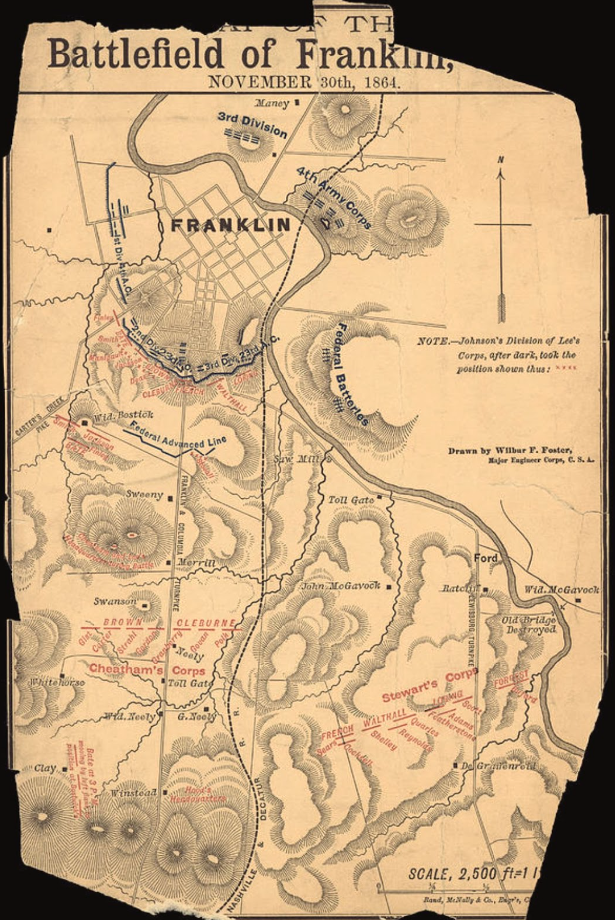
The McGavocks would have soldiers convalescing at their home for almost a year following the Battle of Franklin. Afterwards they donated two acres of their land and created a Confederate Cemetery for the soldiers, who had to be retrieved from their first burial spots and reinterred at the new cemetery, which eventually held over fifteen hundred burials. This cemetery was located mere steps from Carrie McGavocks back door. Carrie became widely known as “the widow of the south”, as she cared for the soldiers’ graves buried in her yard, and their maintenance for the remainder of her life. She kept a record of all of the dead buried at Carnton within a book, and often helped widows and mothers find their loved ones with the records she kept in that journal. Not as much is known about what occurred at Ducros. But, one story is incredibly moving and shows how accustomed to dealing with death Martha Winder had become.
“At the close of the war a picnic was held in the extensive grove surrounding the house to welcome the returning soldiers. It is said that immediately before the festivities began, Mrs. Winder was informed of the death of her youngest son, Captain Felix Winder, but courageously refused to let her grief mar the occasion.”
~WPA Guide to Louisiana
The home at Ducros was in need of much repair following the civil war, as it was occupied by both sides of the conflict and utilized as a field hospital. However, Martha must have made many repairs as she and her family are listed in the 1870 census as living on the property at Ducros with children George (28), John (24), Thomas (22), Van (17) and Sally (16). She lists her wealth as valued at $50,000. In today’s world, Martha’s $50,000 would be equivalent to $1.2 million dollars.
Martha lived at Ducros, or at least owned the property for seven years following the war. She sold the property in 1872.
It is unknown as to where Martha’s permanent home was located following her 1872 sale of the Ducros property. However, in 1880, Martha is living in the household of her son, Attorney John Bass Winder, along with his wife, daughter, Martha’s daughter Sarah Winder and three servants. in Terrebonne Parish, Louisiana. In 1891, Martha Winder would pass away at almost eighty years old while living in the home of her daughter and son-in-law, Dr. and Mrs. John Berrien Lindsley, and their family in Nashville. Below is Martha’s obituary from the Nashville Banner and Whig, December 20,1828:
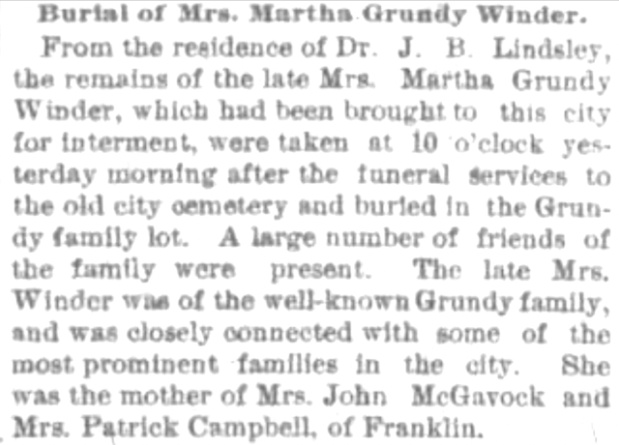
Carrie McGavock would live until 1905 at Carnton, tending to the graves of the soldiers and helping all who needed assistance in finding the grave of their brave loved one. She will forever be immortalized in Robert Hicks best-selling Novel “The Widow of the South.”
After putting all of this information together in one place, it’s easy to see that both Martha and Carrie were very strong women. The deaths they endured, suffering more and more as each came and passed, was nothing less than preparation for the futures they could never have imagined. They both individually rose to the occasion, and exemplified qualities that are beyond admirable. They each took the losses they were continually assaulted by and used what they had experienced to cause positive changes, bringing out strength others were amazed by. I’m certain I’m not alone when I say, if they want to wear black, they’ve earned it!
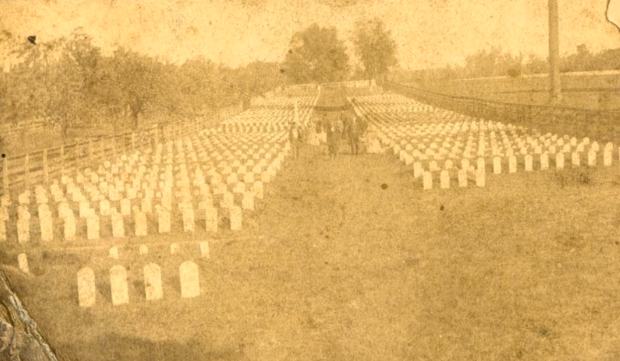

Thanks for reading ... Kimberly
For more on Kimberly, please visit the About page on this website

